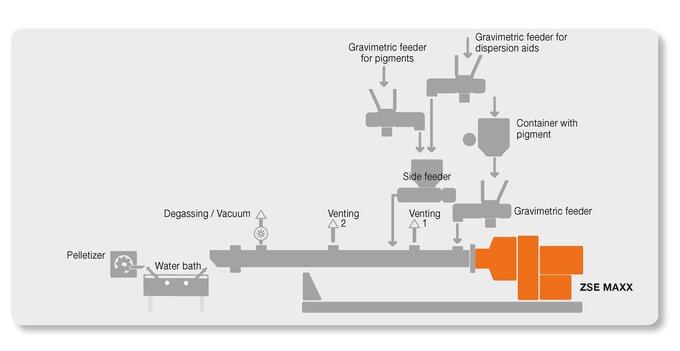The grain of difference
Masterbatch processing is very demanding since high proportions of pigments, additives or filler materials must be incorporated into the base polymer. Optimal dispersion (breaking up of the agglomerates) is the be all and end all and represents a significant challenge. Fine, powdered base materials often tend to form agglomerates and are difficult to process as a result.
Leistritz co-rotating twin screw extruders have become a well-known name all over the world as the core element of masterbatch extrusion lines. They undertake the tasks of homogenization and dispersion, wetting and distribution of pigments/additives/filler materials in the polymer matrix. They do this either in a premix or a split-feed process.

Premix process
A premix made from polymer, pigment and dispersion aid is fed into the extruder via volumetric feeder. This is generally produced in “batches” in mixers in a preceding processing step.

Split-feed process
In this variant of masterbatch production, the polymer is first plasticized. The pigment, the filler material and, where necessary, the dispersion aid are then incorporated into the melt downstream through one or two side feeders. The individual formulation components are supplied through gravimetric feeders.
Contact us

Leistritz Extrusion Team
Leistritz Extrusionstechnik GmbH
T+49 911 4306-610